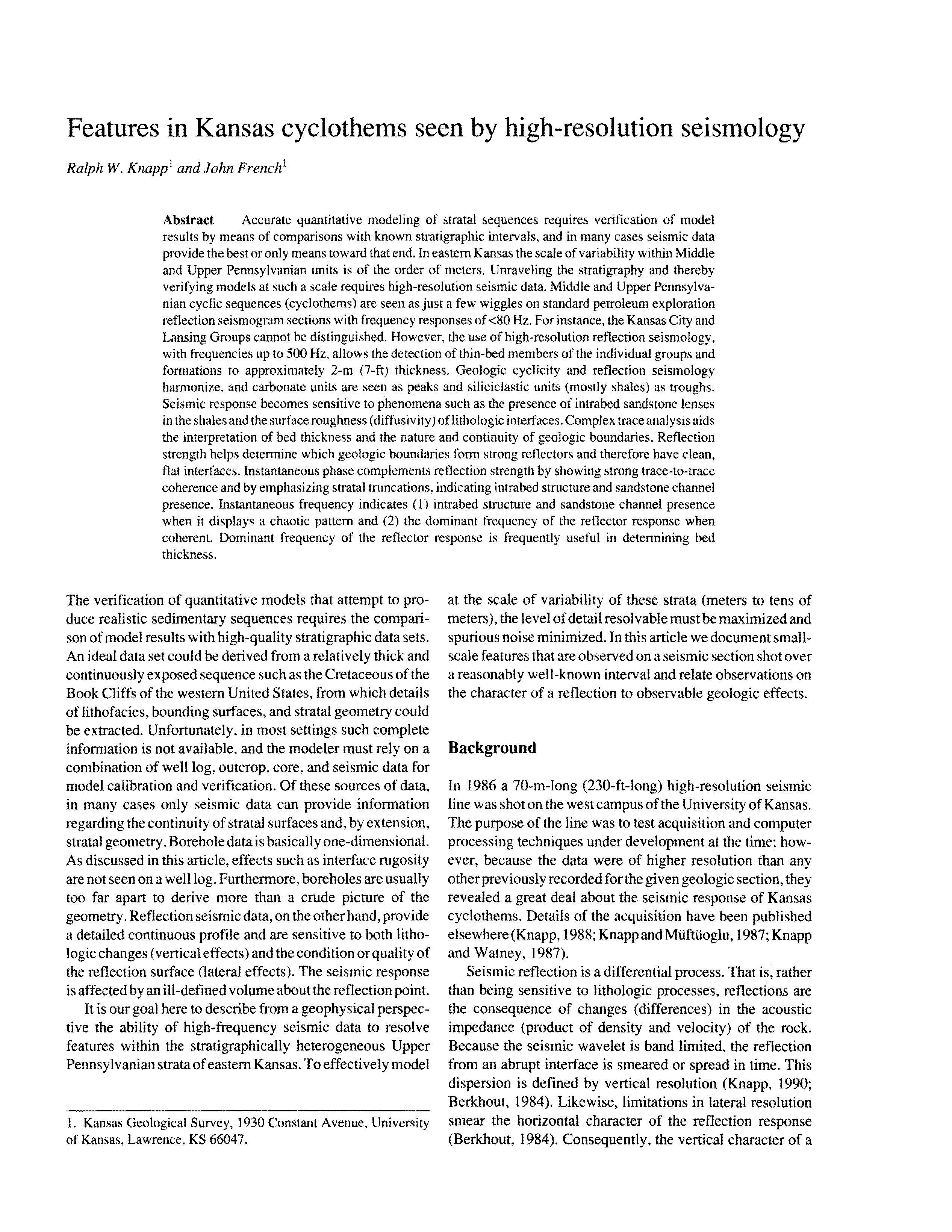Features in Kansas cyclothems seen by high-resolution seismology
DOI:
https://doi.org/10.17161/kgsbulletin.no.233.20452Abstract
Accurate quantitative modeling of stratal sequences requires verification of model results by means of comparisons with known stratigraphic intervals, and in many cases seismic data provide the best or only means toward that end. In eastern Kansas the scale of variability within Middle and Upper Pennsylvanian units is of the order of meters. Unraveling the stratigraphy and thereby verifying models at such a scale requires high-resolution seismic data. Middle and Upper Pennsylvanian cyclic sequences (cyclothems) are seen as just a few wiggles on standard petroleum exploration reflection seismogram sections with frequency responses of <80 Hz. For instance, the Kansas City and Lansing Groups cannot be distinguished. However, the use of high-resolution reflection seismology, with frequencies up to 500 Hz, allows the detection of thin-bed members of the individual groups and formations to approximately 2-m (7-ft) thickness. Geologic cyclicity and reflection seismology harmonize, and carbonate units are seen as peaks and siliciclastic units (mostly shales) as troughs. Seismic response becomes sensitive to phenomena such as the presence of intrabed sandstone lenses in the shales and the surface roughness (diffusivity) of lithologic interfaces. Complex trace analysis aids the interpretation of bed thickness and the nature and continuity of geologic boundaries. Reflection strength helps determine which geologic boundaries form strong reflectors and therefore have clean, flat interfaces. Instantaneous phase complements reflection strength by showing strong trace-to-trace coherence and by emphasizing stratal truncations, indicating intrabed structure and sandstone channel presence. Instantaneous frequency indicates (1) intrabed structure and sandstone channel presence when it displays a chaotic pattern and (2) the dominant frequency of the reflector response when coherent. Dominant frequency of the reflector response is frequently useful in determining bed thickness.
Downloads

